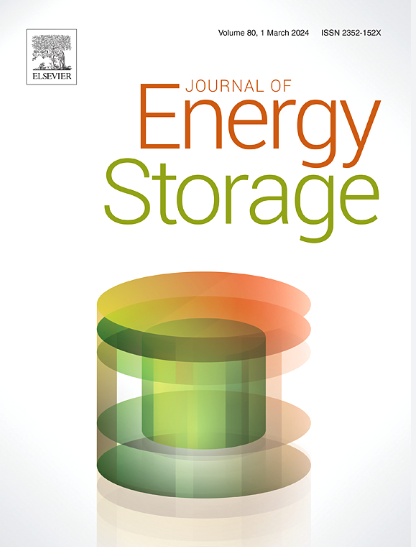Modelling of lithium-ion battery electrode calendering: A critical review
IF 8.9
2区 工程技术
Q1 ENERGY & FUELS
引用次数: 0
Abstract
Lithium-ion Batteries (LIBs) are central to modern energy storage, with growing demands for improved performance, safety, and cost efficiency. Electrode calendering, a critical step in LIBs manufacturing, significantly influences the microstructure and electrochemical properties of electrodes. This review explores advances in the modelling of the calendering process over the past few years, focusing on empirical, numerical, and machine learning approaches. Empirical models, though computationally efficient, are limited by oversimplification, while numerical methods, such as Discrete Element Method (DEM) and Finite Element Method (FEM), offer more detailed insights into the structural evolution during calendering but require intensive computational resources. The growing application of machine learning introduces novel data-driven methods for optimising the process by effectively handling multiscale phenomena and high-dimensional data. A comparative analysis of these modelling strategies highlights the need for hybrid approaches that integrate empirical, numerical, and data-driven models to accurately predict electrode behaviour and optimise calendering conditions. Future research should aim to bridge the gap between computational accuracy and practical application to improve the performance and cost-efficiency of LIBs manufacturing.

锂离子电池电极压延建模:综述
锂离子电池(lib)是现代能源存储的核心,对性能、安全性和成本效率的要求越来越高。电极压延是锂离子电池制造的关键步骤,对电极的微观结构和电化学性能有重要影响。这篇综述探讨了过去几年压延过程建模的进展,重点是经验,数值和机器学习方法。经验模型虽然计算效率高,但受过度简化的限制,而数值方法,如离散元法(DEM)和有限元法(FEM),可以更详细地了解压延过程中的结构演变,但需要大量的计算资源。机器学习的日益增长的应用引入了新的数据驱动方法,通过有效地处理多尺度现象和高维数据来优化过程。这些建模策略的比较分析强调需要混合方法,整合经验,数值和数据驱动模型,以准确预测电极行为和优化压延条件。未来的研究应致力于弥合计算精度与实际应用之间的差距,以提高lib制造的性能和成本效益。
本文章由计算机程序翻译,如有差异,请以英文原文为准。
求助全文
约1分钟内获得全文
求助全文
来源期刊

Journal of energy storage
Energy-Renewable Energy, Sustainability and the Environment
CiteScore
11.80
自引率
24.50%
发文量
2262
审稿时长
69 days
期刊介绍:
Journal of energy storage focusses on all aspects of energy storage, in particular systems integration, electric grid integration, modelling and analysis, novel energy storage technologies, sizing and management strategies, business models for operation of storage systems and energy storage developments worldwide.
 求助内容:
求助内容: 应助结果提醒方式:
应助结果提醒方式:


